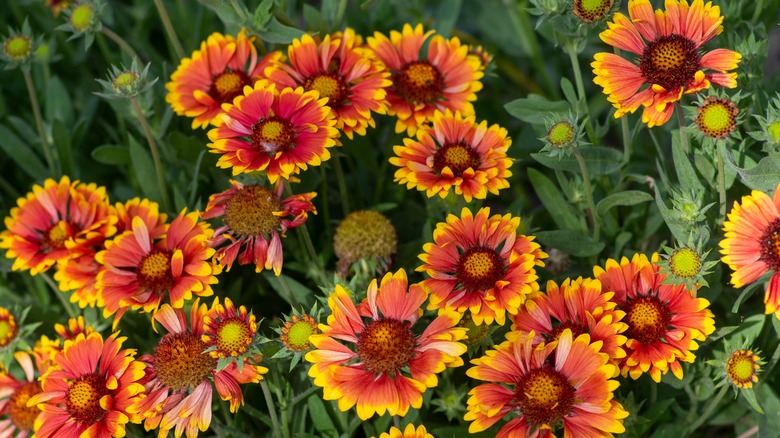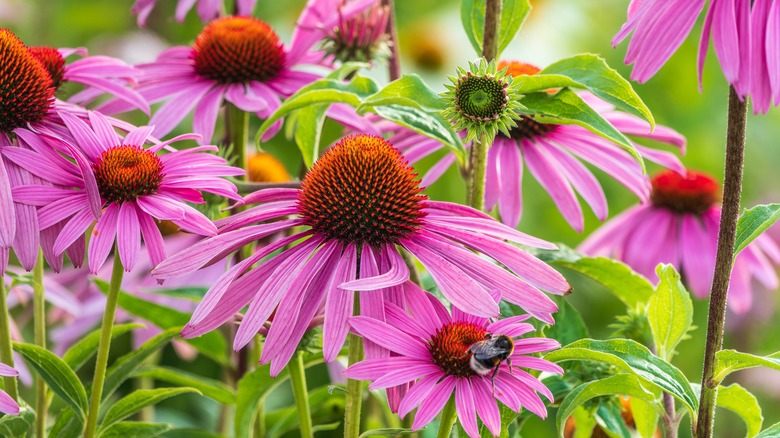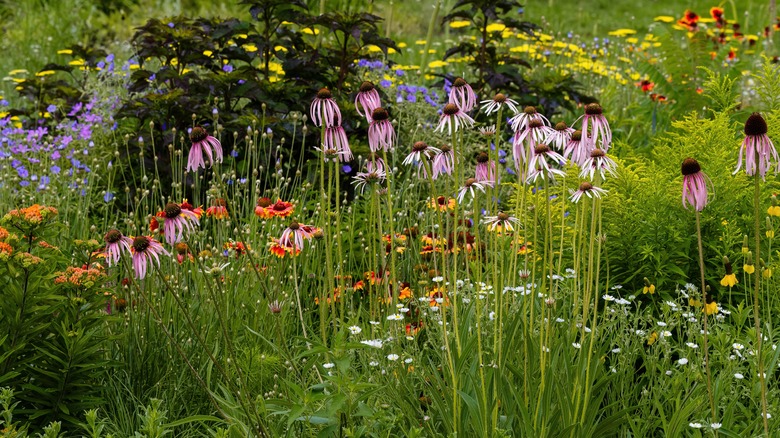The Gorgeous Flower That Looks Fantastic Alongside Bright Indian Blanket Flowers
Indian blanket flowers (Gaillardia spp) are stunning North American native plants whose drought tolerance and bright colors make them essential additions to waterwise gardens. However, they're far from the only North American native flower to fit that bill, and by pairing them with plants with similar needs, you can easily create a vibrant and diverse planting that thrives with little effort. One of the best plants to partner blanket flowers with is echinacea (Echinacea spp).
Not only do both echinacea and blanket flowers thrive in hot and dry landscapes, but they are also hardy in similar regions. Many blanket flower species flourish in zones 3 through 10, while the easy-to-care-for purple coneflower (Echinacea purpurea) has a slightly smaller range of USDA zones 3 through 8.
While the most common echinacea species, the purple coneflower, is native to the Eastern and Central parts of North America — and many blanket flowers' native ranges are largely confined to the Western and Great Lakes States of the U.S. — both plants thrive in gardens throughout the country and are natural companions.
Caring for blanket flowers and echinacea
Many species and cultivars of blanket flowers and echinacea are available, both as live plants and from seeds. Be aware, however, that while there are many advantages to starting seeds instead of buying plants, perennials often take a long time to mature. Echinacea is a perennial, but only some species of blanket flowers are, so don't forget to check whether you are purchasing annuals, biennials, or perennials.
To ensure the best blooms, make sure to plant your echinacea and blanket flowers in an area with full sun, though they can also handle light shade. They prefer soil with a neutral pH, so you may want to measure your soil's pH, and ensure it is between 6.0 and 8.0. While both genera of plants are tolerant of poor soil, neither blanket flowers nor echinacea like having wet feet, so make sure the soil is well-draining.
Combining blanket flowers and echinacea in the garden
With so many species and cultivars of both echinacea and blanket flowers available, it can be hard to know which to choose. You can't go wrong with the classic combination of echinacea purpurea and gaillardia goblin (Gaillardia x grandiflora). As gaillardia goblins rarely grow over 12 inches tall, they fit perfectly in front of the purple coneflowers, which can reach up to three feet in height. Adding in other drought tolerant natives like lanceleaf coreopsis (Coreopsis lanceolata), which also thrives in similar conditions, is a great way to explore xeriscaping, and help your garden in a drought.
While there have been ongoing debates on whether cultivars of native plants (sometimes called nativars) are less beneficial than truly native plants, research is still inconclusive, and both are generally considered better options than non-native species. Don't be surprised if any garden with echinacea and blanket flowers quickly becomes a pollinator garden. Echinacea purpurea is not only a host plant to silvery checkerspot and wavy-lined emerald butterfly larvae, but also a hit with bees, and even birds.


